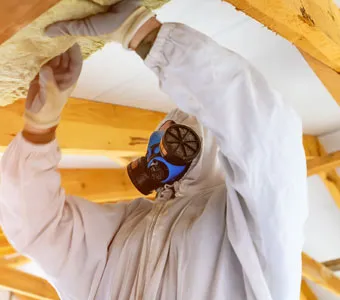Helpful tips for North Carolina homeowners concerned about asbestos
Helpful tips for North Carolina homeowners concerned about asbestos
The dangers associated with asbestos exposure have been well-documented throughout the years. In fact, it would likely prove difficult to find someone living in North Carolina that doesn’t know of the hazards related to the inhalation of these lethal microscopic fibers.
For instance, asbestos exposure has been linked to several deadly diseases, including mesothelioma and lung cancer. To further complicate matters, victims of asbestos exposure often do not experience any ill effects until decades after exposure.
Tragically, even though many in North Carolina know of the dangers associated with asbestos fibers, they are often unaware of the several seemingly harmless sources of asbestos exposure that may be lurking in their homes.
Asbestos in the home
Because of its fire resistance properties, asbestos was commonly used in several home building materials up until the mid-1980s. In fact, the North Carolina Department of Health and Human Services (NC-DHHS) has estimated that asbestos has been used in roughly 3,000 different building materials over the last hundred years. According to the NC-DHHS, some of the prior building materials that may contain asbestos include:
- Steam pipes and boilers insulated with asbestos paper tape or an asbestos blanket
- Cement board used as furnace insulation
- Roofing, siding and shingles made of asbestos
- Sheet flooring and flooring tiles made of asbestos
- Joint or patching compounds made of asbestos
Given the potentially severe consequences of inhaling asbestos fibers, the NC-DHHS has also offered several tips for North Carolina homeowners to follow in order to minimize the risk of asbestos exposure. Some of these tips include:
- If asbestos removal or major repair is needed, make sure the work is done by those who are properly qualified, trained and equipped to handle the job.
- Do not sweep, vacuum or dust debris that may contain asbestos fibers.
- Do not scrape, drill, sand or cut materials made of asbestos.
- Do not attempt to sand asbestos flooring. If flooring needs replacing, attempt to simply install new flooring over the old flooring.
- Make sure to take every precaution to avoid disturbing or damaging any material that may contain asbestos.
These are simply a few words of advice on how to handle asbestos-related situations, but when it doubt, it is always best to contact an experienced construction professional if you believe you may have asbestos in your home. However, if you have already developed an asbestos-related illness due to asbestos exposure, it is also a good idea to contact a knowledgeable asbestos litigation attorney in order to be advised of your rights and options.







